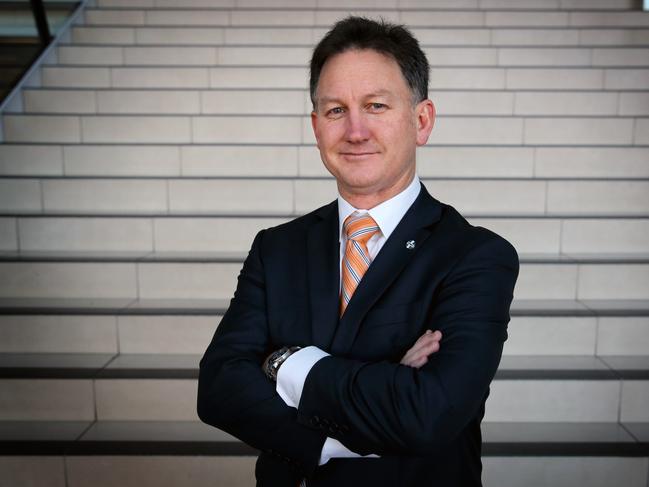Health fund membership on verge of death spiral, doctors warn
SOARING premiums are forcing young Australians to dump their costly private health cover. But the big insurers are still raking it in.
Health
Don't miss out on the headlines from Health. Followed categories will be added to My News.
DOCTORS are warning health fund membership has entered a death spiral as the percentage of the population covered plunged to just 45.5 per cent of the population.
Despite the drop off, official government data shows health fund profits are continuing to soar to over $1.38 billion with policies covering less of their members’ health bills.
Opposition Health Spokesman Catherine King said this meant “the 13 million Australians with private health insurance are each contributing about $280 a year to the bottom line of the insurers, rather than to consumer benefits”.
Health fund membership has dropped from a peak of 47.6 per cent of the population in 2017 and there were 7365 fewer hospital policies in March 2018 than March 2017.
The latest fall in membership came before the latest twice-the-inflation rate premium hike of 3.95 per cent that took effect in April and despite government reforms saving the industry $1 billion.
“I do worry we are getting closer and closer to the tipping point,” Australian Medical Association president Dr Michael Gannon said.

Of most concern is the trend of young people, aged 20-34, dropping their cover. The biggest increase in health coverage was among those aged 70-74.
This spells serious problems for the industry because it means more old and sick people — who will use their cover — are joining funds while young and healthy people — who are less likely to use insurance — are quitting.
This will increase pressure on premium rises.
While health fund members are paying higher premiums their policies are covering less of their medical bills.
Medical out of pocket expenses faced by patients leapt an astounding 12.3 per cent over the year.
The average medical gap payment is now $166.98.
Plastic surgeons are most likely to charge a gap (38 per cent) followed by Ear Nose and Throat surgeons (29 per cent), Urologists and Orthopaedic surgeons (25 per cent).

Dr Gannon said the increasing out of pocket bills faced by patients was a direct result of the Turnbull Government’s four-year freeze on Medicare rebates.
Doctors costs for staff wages, rents and consumables were continuing to rise while Medicare rebates, which form a key part of health insurance payouts had remained fixed at 2014 levels, he said.
Private Healthcare Australia chief Rachel David said the figures showed Private Health Insurance reforms have had a positive impact on PHI membership.
An extra 50,000 Australians have taken out health cover in the 12 months ending March 2018, she said.
Most of these took out extras cover for dental and optical care rather than hospital cover and older people who are higher users were the biggest group of new members.
Health fund reforms announced last year would cut the inflated prices insurers had to pay for medical devices like hip replacements and the latest premium rise was the lowest in 17 years, she said.

“Of course members are concerned about rising premiums and out-of-pocket medical costs but they also understand that premiums are rising because the funds are paying for more healthcare.
“We are working with the government and stakeholders to improve affordability by addressing issues such as cost-shifting from the public sector, low-value and wasteful care, fraud and compliance issues with the MBS,” she said.
“In addition the Government has an expert committee working on a transparency-based solution to out-of-pocket costs, so GPs can assist patients to find an appropriately qualified low-charging specialist.”
Consumer’s Health Forum chief Leanne Wells said the latest figures again underline the need for real reform of health insurance.
“We need a comprehensive set of reforms that will improve the value for money to convince people that having private health insurance is worth it for them . We won’t see the impact of any of the current reforms until next year when their implementation kicks in,” she said.
The latest figures show government policies that force people over age 30 and earning over $90,000 a year to take out cover and recent reforms to save the industry $1 billion are no longer working.
News Corp reported recently that a tax penalty that forces people to buy health insurance has also lost its sting.
Health fund premiums have soared so high it’s now cheaper for many to pay the tax penalty than buy insurance.
Bessie Hassan, Insurance Expert at finder.com.au said health insurance premiums have risen by an average of 52 per cent since 2010, and the April premium increase is likely the biggest reason why hospital membership decreased last quarter.”
By 2051, finder.com predicts that if current trends continue, the average family will be spending 20.2 per cent of their wages on health insurance.



